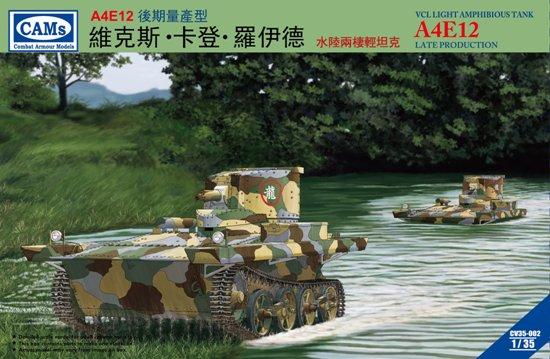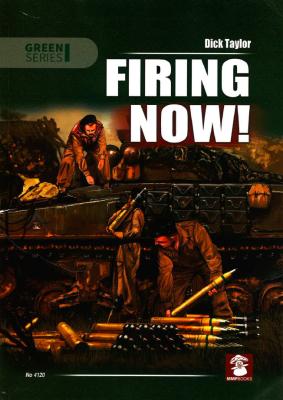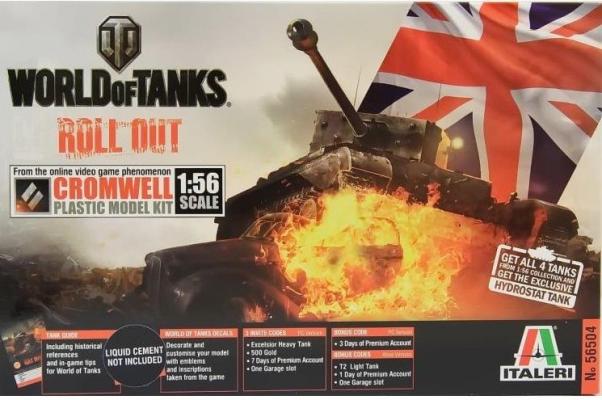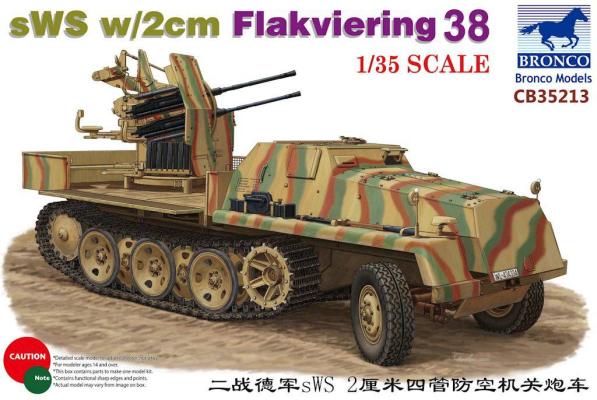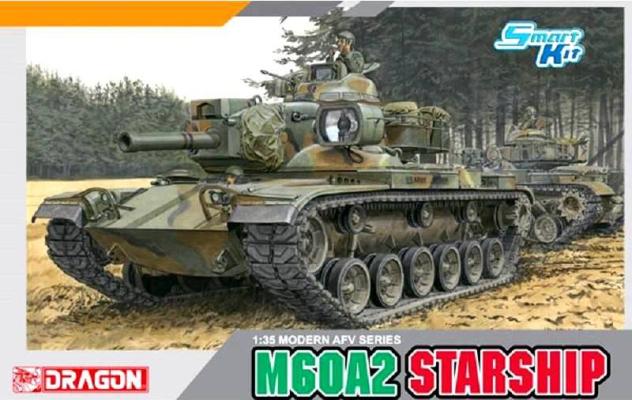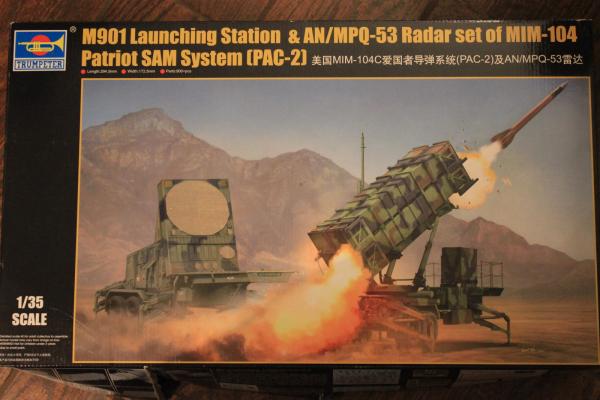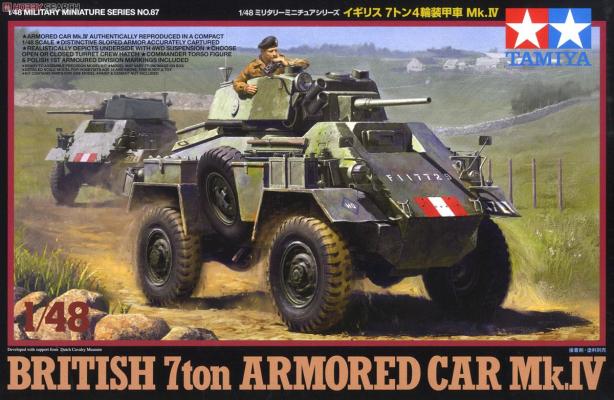Given the long pedigree of Airfix, it is of no surprise that from time to time, they re-release older kits such as the Crusade Mk. III. The vehicle is iconic and was the mainstay of the British armored force in their extended campaign in North Africa. The vehicle’s history is summed up in the instructions:
Not many of the Vickers A4E12 (late) amphibious tanks were produced and oddly enough only two were purchased by the UK from Vickers. In all, a total of 43 examples were produced with the largest number, 29 purchased by China in 1932. The Chinese A4E12s were used operationally through 1942 when they were turned over to the Army Mechanized School in Chengdu. The instruction history indicates this Vickers tank never saw any combat in China, but who is to say for sure. You may also notice a striking similarity between the A4E12 and the Russian T-33 light amphibious tank. Not so strange when you consider the Russians purchased eight examples from Vickers.
Dick Taylor is a recently-retired British Army Lieutenant Colonel who has been deployed in many areas of the world, including Bosnia, Kosovo, Iraq, Afghanistan, South Sudan and lately, in Sierra Leone in the fight against Ebola. Joining the army as a junior soldier in 1976, he has served exclusively in the Royal Tank Regiment. Commissioned in 2000, he has specialized in tank gunnery instruction, Chemical, Biological, Radiological and Nuclear operations, Psychological Operations, and defense exporting. He has a First Class degree in History, a Master of Philosophy degree in Historical Research, and a Master of Arts degree in Political Science. He is married with two sons and lives in Blandford Forum, Dorset. Dick Taylor has authored, or co-authored, at least 16 books on armored fighting vehicles, primarily with Mushroom Model Publications.
Italeri has recently begun producing a line of 1/56 scale AFVs and figures. This might be an unusual scale for most model builders, but is a fairly common wargaming scale equivalent to the 28mm scale. The Cromwell tank kit is one of their newest kits promoting the on-line video game, World of Tanks®. Italeri currently has four kits in 1/56 scale promoting World of Tanks®, the other three kits include the Pz. Kpfw VI Tiger, the Pz. Kpfw. V Panther, and the M4 Sherman.
This kit comes packaged in a side-opening box displaying a Cromwell tank crushing a burning car, with the British Union Jack flag in the background on one side, and a World of Tanks® logo proudly displayed on the other. This artwork is exactly the type of branding World of Tanks® does with their video game, and the result is very striking.
Following right on the heels of their Schwere Wehrmachtschlepper (sWS) IR-Searchlight halftrack, Bronco Models has now offered the same wide-tracked vehicle sporting a four-barreled 2cm Flakvierling anti-aircraft gun.
Like the one before, this ‘new’ kit is actually a reissue of the high-quality Great Wall (Lion Roar) kit from a few years back. Aside from the box art and the color of the plastic, the main difference between the two kits is that Bronco includes a complete engine assembly. At some point GW introduced these parts as an aftermarket set you had to purchase separately for their sWS kits. Bronco brings everything together into another solid offering, with more to come.
This magazine is a listing of 1/35 scale plastic model kits for German armored fighting vehicles (AFV). Most kits are shown on one page with the manufacturer and name of the kit, plus the name of the modeler that built the sample model.
The text is mostly in Japanese, but the manufacturer, model name, and model are all listed in English also. This makes it easy to thumb through the photographs and identify the kit manufacturer. The models are all beautifully done and the color photographs illustrate the models very nicely. Some of the kits are not shown as built examples but rather photographs of the box art and sprues. There are also a few reference photos of the original vehicles.
An introductory section shows detail photos of assembly and painting of an AFV Club Schwerer Panzerspahwagen Sd. Kfz. 232, and a Dragon Tiger I.
The book includes the following sections
Developed in the late 1960s, the M60A2 was an ambitious attempt to create a multi-tasking battle tank to accompany the M60A1, one capable of firing both conventional 152mm rounds or the new Shillelagh anti-tank missile. It featured a rotating command cupola with integral machine gun and a distinctive low-silhouette turret. Because of its technologically advanced design it was nicknamed “The Starship” by operators. It went into service in 1972, and all told, 526 were manufactured.
Despite the hype, the vehicle proved to be a major disappointment, as the new anti-tank missile lacked both range and armor penetration capability. Consequently, it was phased out of service rapidly, the hulls being converted to M60A3 standards or being used as the basis for bridgelayers. The gun system, however, was incorporated into the M551 Sheridan air-droppable tank after revision due to its light weight.
Tamiya’s ever growing line of 1/48 armor kits has added one of the most produced armored figting vehicles of the Second World War, the Panzerkampfwagon IV, with this release being the ausf H version. The kit is molded in Tamiya’s standard desert yellow plastic. The tracks are plastic link and length type, and the only multi-media in the kit is two steel weights for the lower hull. Originally Tamiya 1/48 armor kits came with die cast metal lower hulls, but that has been replaced with a plastic hull in this release, with the two weights being a compromise. There is no zimmerit texture on the hull parts, a necessity for a German armor kit of this time frame. Tamiya recommends either buying their zimmerit tools and applying your own, or using the self adhesive vinyl zimmerit that they produce. I chose the latter for my build.
The PAC-2 Patriot is a surface-to-air missile system, whose primary purpose is to intercept ballistic missiles in the terminal phase of flight. This new offering from Trumpeter is the first injection molded kit of the Patriot Missile system in 1/35 scale. The kit includes the Transporter Erector Launcher Trailer, 4 missile containers, a missile and the AN/MPQ-53 Radar set trailer. There is only one option for displaying both trailers and that is the deployed position with the outriggers down and the missiles raised.
The latest in Tamiya’s range of 1/48th scale military vehicles is what the firm lists as a “British 7ton Armored Car Mk.IV”, while the correct designation is in fact “Armoured Car, Humber Mk.IV”, so I presume the lawyers found that “Humber” was a protected trademark and Tamiya didn’t want to pay for the privilege of using it! These vehicles were to be found all over Italy and NW Europe in British, Canadian, Polish, etc. units, as well as training units in the UK, from 1943 onwards.
Gone are the days when Tamiya incorporated a cast metal hull piece or lumps of metal to attach to the hull interior of their 48th scale military vehicle range. This kit includes only injection molded plastic parts of a dark green color, plus a small decal sheet. No cast metal, no photo etched, no clear injection plastic parts. Detail is good for this scale and there are no visible ejection pin marks that need removing, nor any flash on the parts.


